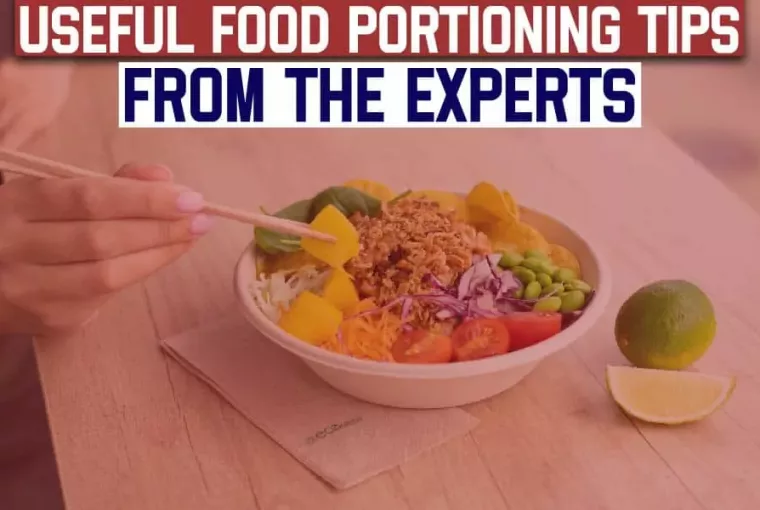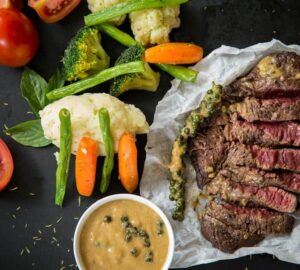It’s a fact that balancing your diet is important for maintaining a healthy weight. But it can be hard to know how much of each food group you should get in order to meet the right nutrient intake. In this post, we’ll give you some easy measurements and guidelines to make sure you’re getting the right portion sizes from all three major food groups every time. Another great benefit of learning about useful portioning tips is that you will know how to properly serve a meal, and host the next dinner party like a pro. It takes some planning and adjustment, but it is well worth it.
Measure All The Ingredients
When it comes down to the scales measure the weight, rather than volume. For actual ingredients like meat, fish, and vegetables. The denser the food is (like meat or fish), the less you need to eat to feel satisfied. Using a measuring cup for these things will lead to overconsumption. Instead of that, contact a company that manufactures scales and look up what options are being offered. A simple scale will do the work and won’t take up much of your kitchen storage. If you get the one with a bowl attachment, it will make your task easier.
Include Visible Fats In Each Meal
We naturally look at fat as a bad thing but in reality, our bodies need it to function properly. In addition, fats can add flavor and texture to dishes, giving them the taste that we love. Include visible fats in each meal when cooking or preparing food, but try not to go overboard with it. Think of a tablespoon per person for a large dish serving four people. For a smaller dish for two people, you should aim for about half a tablespoon of fat per person.
People who eat visible fat stay fuller for longer and have a lower BMI than those who don’t include any visible fat in their meals. You can achieve this by simply sprinkling some cheese on your salad, or spreading some butter on your bread before toasting it. If you are unsure about where to include visible fats in your diet, try adding some avocado onto toast or sprinkling olive oil onto your salad or pasta dish. Doing this will provide just enough fat to keep you full while staying within your calorie budget for the day.
Measure Protein Portions Accurately
This is important because too much protein can put an unnecessary strain on all of your major organs, leading to long-term health complications down the line. If you’re using meat as a protein source, stick to three ounces per person. If you’re using tofu or legumes, 1/2-1 cup is enough for one serving.
With chicken and beef specifically, you should aim to include visible lean meat in every meal. With these meats, the pork chop rule applies. This means that there should be no more than a single layer of fat between you and the bone when you cut into it. Another good tip is to avoid frying for too long as this can cause the meat to become tough and chewy, which can increase your chances of overeating. Include a variety of proteins in your diet including fish, eggs, dairy products like milk or cheese, soy products like tofu, legumes such as beans, and meat such as chicken or beef.
Subject Your Vegetables To The Size Rule
When it comes to veggies, you want them to be about half the size of your fist when chopped. That should provide a good balance in overall nutrition and leave you feeling full after eating it. If you’re using fresh produce for this purpose, then we recommend that you use a chopping knife rather than a pair of scissors or other tools. You can also steam or grill vegetables instead of frying them in oil if you prefer. If your goal is weight loss, avoid adding butter and cream sauces on top of your veggies when cooking cause they add calories to the dish without actually making much difference when it comes to flavor.
Make It A Habit Of Using Smaller Plates And Cups
If you use big bowls, plates, or glasses, chances are that you’ll get tired of eating by the time you get to the bottom. This is because your brain gets tricked into thinking it’s already satisfying, even though there’s still food on your plate or in your bowl. If you want to trick yourself into feeling fuller quicker, then try making the serving containers smaller. You can do this by buying smaller bowls, glasses, and plates. These will allow you to serve larger portions without overdoing it later on in the meal when hunger kicks back in again.
Convert All Of Your Meals Into Plastic Containers
If you are the type of person who tends to grab whatever is at hand when you’re hungry, then this tip is especially useful for you. As mentioned above, meal pre-portioning can work wonders when trying to control weight gain or maintain a healthy diet plan. If that’s not enough to convince you about this simple step, then consider this: if there was less food available after conversion, your cravings should lessen over time since they would know that there won’t be anything else to eat if they wait too long. In order to do this, try using plastic containers and sealable bags that you can store in the fridge or freezer. Pack some food into them and label it accordingly so that you won’t confuse meals later on.
What’s My Recommended Portion Size?
The amount of food you should aim to have for breakfast, lunch, and dinner can vary depending on who you ask. Most dieticians agree that the average healthy adult requires one cup of whole grains, two cups of veggies, two ounces of meat or other protein sources, and one serving of fruit. You should try to include a portion from each food group every time you eat so that your body receives all the nutrients it needs.
When planning out your meals, keep in mind that you need space for three main meals if you are eating five times per day. You also need to take into account any snacks or smaller portions eaten during the day as well as post-dinner treats like fresh fruits or desserts with low-fat ingredients. Once you have the recommended portion sizes worked out for each meal, all you need to do is add them up and see how much they add up to in total. If it’s more than what you’re eating at the moment, then focus on a few of the tips above until your daily intake of food is within a healthier range.
As always, make sure you pay attention to your own body when going about dieting or weight loss. If something new does not agree with you for any reason, stop doing it immediately. In addition, don’t be afraid to get creative when cooking healthy dishes since there are plenty of online recipes out there that use fruits and vegetables along with other ingredients.




